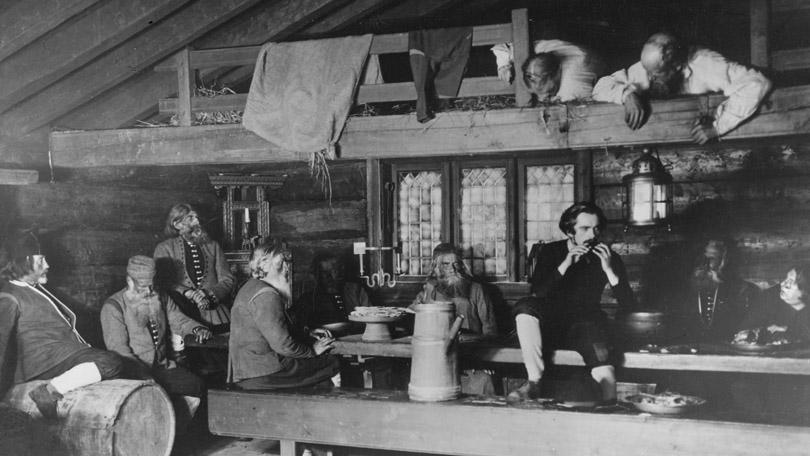The Parson’s Widow was shot from approx. 1 May to approx. 15 July 1920 in Norway. Dreyer had previously made a research trip to Norway in March 1920.
Wanting to create a completely authentic environment in the film, he used a museum village founded by the Norwegian dentist Anders Sandvig (1862-1950). This cultural history museum – and its open-air section, with stave church, parsonage, scattered farms, houses and buildings with furnishings and folk art – sits on 40 or so hectares in Maihaugen on the outskirts of Lillehammer (www.maihaugen.no). Not a single set was built for the film. All the interiors were shot inside the cramped houses. Electricians had to extend long cables from the local power plant to Maihaugen in order to light the dark farmhouse rooms. In an interview (Morgenbladet, 24 July 1920), Dreyer says that up to 40,000 "normal lights" were used. The actors’ eyes were hurting from the sharp artificial light and the shots had to be arranged so that those with the most eye pain could get days. When they were feeling better again, the other actors got a day off to rest their eyes.
The film’s peasants were real peasants and other "natives" of the Guldbrandsdalen valley. Dreyer went on drives with the writer Olav Aukrust, who had local knowledge, combing the countryside for extras to hire. He needed 70-80 men, who were all required to have full beards.
The Swedish actress Hildur Carlberg (1843-1920), in the title role, had previously acted in films by Mauritz Stiller and Viktor Sjöström. She was 76 years old and deathly ill on the shoot, but she made it through to the last day. She died shortly after, on 27 August, and never got to see the finished film.
The Parson’s Widow is also an early example of a model Scandinavian collaboration: Swedish producer, Danish director and director of photography, Norwegian literary source and locations. The male lead, Einar Röd, was Norwegian, as were William Ivarson, Lorentz Thyholt and Olav Aukrust. As mentioned, Hildur Carlberg was Swedish, as were Greta Almroth and Kurt Welin. The cast also included two Danish actors, Mathilde Nielsen and Emil Helsengreen.
By Lisbeth Richter Larsen | 25. February
